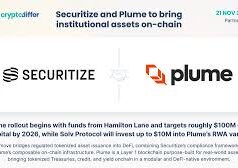Bitcoin’s been a wild ride, hasn’t it? One day it’s soaring to new heights, the next it’s dipping just enough to make your stomach churn. For those of us who’ve been watching the crypto market for a while, the volatility is both a curse and a charm. But every now and then, someone drops a gem of insight that makes you sit up and pay attention. Enter Markus Thielen, the head of research at 10x Research, who’s got traders buzzing with his latest take: $111,673 could be the optimal entry point for Bitcoin (BTC). He also points to a break and hold above $120,000 as another prime buying opportunity. Oh, and don’t forget his golden rule—set those tight stop-losses. Let’s unpack this, explore what it means for traders, and figure out how to approach this high-stakes game without losing your shirt.
Why $111,673? Understanding Thielen’s Call
First off, let’s talk about that oddly specific number: $111,673. It’s not just a random figure plucked from thin air. Analysts like Thielen don’t throw out price targets for kicks—they’re looking at charts, trends, and a whole lot of data. While the exact reasoning behind this price point isn’t spelled out in neon lights, we can make some educated guesses. This level likely aligns with key technical indicators—think Fibonacci retracement levels, historical support zones, or even a confluence of moving averages. These are the kinds of tools that analysts use to pinpoint where the market might pause, consolidate, or reverse.
Thielen’s call suggests that $111,673 could act as a sweet spot where Bitcoin finds strong support, making it a low-risk entry for traders looking to ride the next wave up. Why does this matter? Because in a market as choppy as crypto, finding a price level where the risk-reward ratio tilts in your favor is like finding a lighthouse in a storm. If Bitcoin dips to this level and holds, it could signal a strong base for the next leg up. But—and this is a big but—Thielen’s not saying to go all-in blindly. He’s adamant about risk management, which we’ll get to in a bit.
The $120,000 Breakout: A Signal to Watch
Now, let’s shift gears to Thielen’s second key level: $120,000. This isn’t just another number—it’s a psychological and technical milestone. Breaking and holding above $120,000 would be a massive deal for Bitcoin. Historically, round numbers like this act as magnets for price action. They’re where traders set their sights, where headlines get written, and where momentum can snowball. A clean break above $120,000, especially with strong volume, could confirm a bullish trend and draw in a flood of new buyers—retail and institutional alike.
But here’s the catch: Thielen’s not just talking about a quick spike above $120,000. He’s emphasizing a break and hold. That means Bitcoin needs to not only punch through that level but also stay there, proving it’s got the legs to keep climbing. This is where patience comes in. Jumping in the moment BTC touches $120,000 could be a recipe for getting whipsawed if the breakout fails. Thielen’s advice points to waiting for confirmation—maybe a daily or weekly close above that level—before pulling the trigger.
Risk-Reward: The Heart of Thielen’s Strategy
If there’s one thing that stands out in Thielen’s analysis, it’s his focus on the risk-reward ratio. This isn’t some get-rich-quick scheme; it’s a disciplined approach to trading. The risk-reward ratio is all about weighing what you stand to gain against what you could lose. Let’s say you buy BTC at $111,673, expecting it to climb to $130,000. That’s a potential gain of about $18,327 per Bitcoin. But what if the trade goes south? Thielen’s answer: set tight stop-losses.
A stop-loss is your safety net. It’s an order to sell your position if the price drops to a certain level, limiting your losses. For example, if you buy at $111,673 and set a stop-loss at $108,000, you’re risking about $3,673 per Bitcoin. If the potential reward is $18,327, that’s a risk-reward ratio of roughly 1:5—lose $1 to make $5. That’s the kind of math traders live for. Thielen’s emphasis on tight stop-losses means he’s not advocating for holding through massive drawdowns. If Bitcoin doesn’t behave as expected, cut your losses and move on.
The Bigger Picture: What’s Driving Bitcoin’s Potential?
So, why are we even talking about these lofty price targets? Bitcoin’s been on a tear, and the macro environment is playing a big role. Interest rates, inflation, and global economic uncertainty have pushed investors toward alternative assets like Bitcoin. Add in the growing adoption by institutions, the rise of Bitcoin ETFs, and the ever-present buzz around halving cycles, and you’ve got a recipe for bullish sentiment. Thielen’s analysis likely factors in these fundamentals, alongside technicals, to arrive at his price targets.
But it’s not all sunshine and rainbows. Crypto markets are notoriously unpredictable. Regulatory crackdowns, macroeconomic shifts, or even a tweet from a high-profile figure can send prices spiraling. That’s why Thielen’s focus on risk management is so critical. You can be bullish on Bitcoin’s long-term potential and still get burned in the short term if you’re not careful.
How to Trade This: A Practical Guide
Alright, let’s get down to brass tacks. How do you actually put Thielen’s advice into action? Here’s a step-by-step approach for traders looking to capitalize on these levels:
- Watch $111,673 Like a Hawk: Set alerts on your trading platform for this price level. Look for signs of support—higher trading volume, a bounce in price, or candlestick patterns like a hammer or engulfing bullish candle. These can signal that buyers are stepping in.
- Confirm the Break Above $120,000: Don’t jump in the second Bitcoin hits $120,000. Wait for confirmation—a daily close above this level, ideally with strong volume. If you’re feeling extra cautious, wait for a retest of $120,000 as support.
- Set Tight Stop-Losses: Calculate your risk tolerance before entering a trade. A stop-loss 2-3% below your entry point is a good starting point for a tight stop. For example, if you buy at $111,673, a stop at $108,000 or $109,000 limits your downside while keeping you in the game if the trend continues.
- Scale In and Out: Don’t go all-in at once. Consider scaling into your position—buy a portion at $111,673, another if it breaks $120,000. Similarly, take profits incrementally as Bitcoin climbs to lock in gains.
- Stay Informed: Keep an eye on macro events—Federal Reserve announcements, crypto regulations, or major market moves. These can derail even the best technical setups.
The Emotional Side of Trading
Let’s be real: trading Bitcoin isn’t just about numbers and charts. It’s an emotional rollercoaster. The fear of missing out (FOMO) can push you to buy at the wrong time, while a sudden dip can make you second-guess your strategy. Thielen’s advice to set tight stop-losses isn’t just about protecting your capital—it’s about protecting your sanity. Having a clear plan and sticking to it takes the emotion out of trading, letting you focus on the bigger picture.
Is This the Moment?
Markus Thielen’s analysis gives us a roadmap for navigating Bitcoin’s next potential move. The $111,673 entry point offers a compelling risk-reward setup, while a break above $120,000 could signal the start of a new bullish phase. But as with anything in crypto, there are no guarantees. The key is to approach this with discipline—use technicals to time your entry, set stop-losses to manage risk, and stay grounded in the face of market noise.
Whether you’re a seasoned trader or a crypto newbie, Thielen’s insights are a reminder that success in this market comes from preparation, not luck. So, are you ready to watch those levels and make your move? Or will you sit this one out and wait for the next signal? Either way, keep your eyes on the charts and your emotions in check. Bitcoin’s next big move could be just around the corner.




























I’ve been watching Bitcoin’s price action closely, and this level does seem like a solid entry point
. Do you think the upcoming halving effects are already priced in, or could we see more volatility before the bull run
Great analysis on the $111,673 support level!